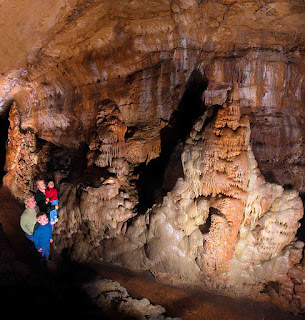Igneous Rocks are formed when molten lava cools and hardens over time (also known as intrustive igneous rock), or when the crust meets the mantle and previous content is melted and hardened into rock (extrusive). Examples: Pumice and granite
 |
| Pumice |
Sedimentary rock is formed by the collection of rocks and materials at the surface of the earth and in bodies of water. Typically the layers in sedimentary rock makes it easy to tell how it was formed and over how long it took to form. Examples: sandstone and chalk
 |
| Sandstone |
Metamorphic rocks are exactly what they sound like, rocks that have mophed into something new. Either igneous, sedimentary or older metamorphic rock, under extreme pressure and heat and be caused to change both physically and chemically. Once a rock changes its form like this, it is considered a metamorphic rock. Examples: Marble, which is metamorphosed limestone and Slate, which is metamorphosed from shale or silts.
 |
| Slate |





